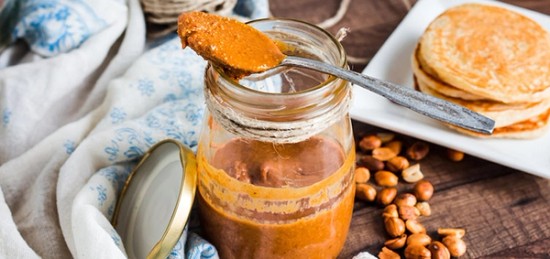You are using an out of date browser. It may not display this or other websites correctly.
You should upgrade or use an alternative browser.
You should upgrade or use an alternative browser.
Did you know?
- Thread starter Johnny West
- Start date
Luckytrim
Grill Master
© National Peanut Board 2023
Home
 Aug 15, 2023
Aug 15, 2023
Home
25 Fun Facts About Peanuts & Peanut Butter

- It takes about 540 peanuts to make a 12-ounce jar of peanut butter.
- By law, any product labeled “peanut butter” in the United States must be at least 90 percent peanuts.
- It takes 3.2 gallons of water to produce 1 ounce of peanuts. (Bonus fact: 1 ounce of almonds takes 28.7 gallons)
- The average peanut farm is 200 acres.
- The average person will eat almost 3,000 PB&Js in their lifetime, according to a 2016 survey by Peter Pan Simply Ground Peanut Butter.
- The average adult eats a PB&J three times a month.
- The Huffington Post (Sept. 2014) asked, “What makes the best peanut butter and jelly sandwich? Results show: 36% say strawberry jam is favorite (grape is 31%); favorite bread is white bread (54%); favorite type of peanut butter is smooth (56%) and a whopping 80% like their PB & J with the crust left on the sandwich. Discover why the PB&J is the best sandwich ever.
- Two peanut farmers have been elected president of the USA – Virginia's Thomas Jefferson and Georgia's Jimmy Carter.
- Astronaut Alan Shepard brought a peanut with him to the moon. Read about making a PB&J on the International Space Station.
- Former President Bill Clinton says one of his favorite sandwiches is peanut butter and banana; also reported to have been the favorite of Elvis “the King” Presley.
- There are six cities in the U.S. named Peanut: Peanut, California; Lower Peanut, Pennsylvania; Upper Peanut, Pennsylvania; Peanut, Pennsylvania, Peanut, Tennessee; and Peanut West Virginia.
- According to Little Brownie Bakers, cookie bakers use about 230,000 pounds of peanut butter per week to bake Girl Scout's Do-si-dos and Tagalongs. Click here for a chai-spiced peanut butter cookie recipe.
- Women and children prefer creamy peanut butter, while most men opt for chunky. Here's a creamy peanut butter smoothie recipe.
- People living on the East Coast prefer creamy peanut butter, while those on the West Coast prefer the crunchy style.
- Boiled peanuts are considered a delicacy in the peanut growing areas of the South. Freshly harvested peanuts are boiled in a brine until they are of a soft bean-like texture.
- Goober—a nickname for peanuts—comes from “nguba”, the Congo language name for peanut.
- Peanuts are sometimes called “ground nuts” or “ground peas” because peanuts grow underground.
- The nub between two peanut halves is an embryo. Learn more about how peanuts grow.
- George Washington Carver was known as the “plant doctor” and the “grandfather of peanuts”. He discovered many ways to use peanuts and innovative farming methods, including crop diversification and soil conservation.
- The average European eats less than 1 tbsp of peanut butter a year.
- The furthest thrown a peanut has ever been thrown was 124.4 feet.
- There are four different types of peanuts – Runner, Valencia, Spanish and Virgnia.
- There are enough peanuts in one acre to make 35,000 peanut butter and jelly sandwiches. (Source: USDA NASS data)
- Every year Americans eat enough peanut butter to coat the floor of the Grand Canyon.
- In a high-pressure environment, peanut butter can be turned into diamonds.
Johnny West
Well-known member
Johnny West
Well-known member
Johnny West
Well-known member
Johnny West
Well-known member
LOL! It's been a rough couple of centuries for the British!
Lee
Johnny West
Well-known member
And getting worse…LOL! It's been a rough couple of centuries for the British!
Lee
Luckytrim
Grill Master
Eggplant, tomatoes, and potatoes are all edible members of the potentially deadly Nightshade family .
The nightshades, or Solanaceae, comprise a wide variety of useful and medicinal plants and grow on every continent except for Antarctica. Chili peppers and sweet peppers are also members of this family.
The nightshades, or Solanaceae, comprise a wide variety of useful and medicinal plants and grow on every continent except for Antarctica. Chili peppers and sweet peppers are also members of this family.
SilverSage
Resident Crone
They have already constructed a road like this in Detroit - it's in the old Corktown district. It's not very long, but it does work. It's a prototype of things to come. https://apnews.com/article/wireless...ging-detroit-22fcdeabd026d81712a0c1a12b190d9a
Johnny West
Well-known member
Did you know?
The January full moon is known as the Wolf Moon.January was named for the Roman god Janus, the protector of gates and doorways, who symbolises transitions, change and the passage of time.
The origins of the modern-day Dry January challenge can be traced back to the Second World War. In 1942, while other countries were reducing or eliminating sugar, the Finnish government initiated the ‘Raitis Januar’ (Sober January) movement encouraging people to stop drinking alcohol for at least a month to save national resources. It was one of the most successful government campaigns ever recorded, with the vast majority of the population responding enthusiastically.
LastManStanding
Well-known member
I read about this guy further, after seeing this, and found this in another article: "Guns reported that Wharton, in one case, killed eight bears in "revenge" after one killed his pet ram and, in a bizarre role reversal, ate the bear meat with his deer teeth."
